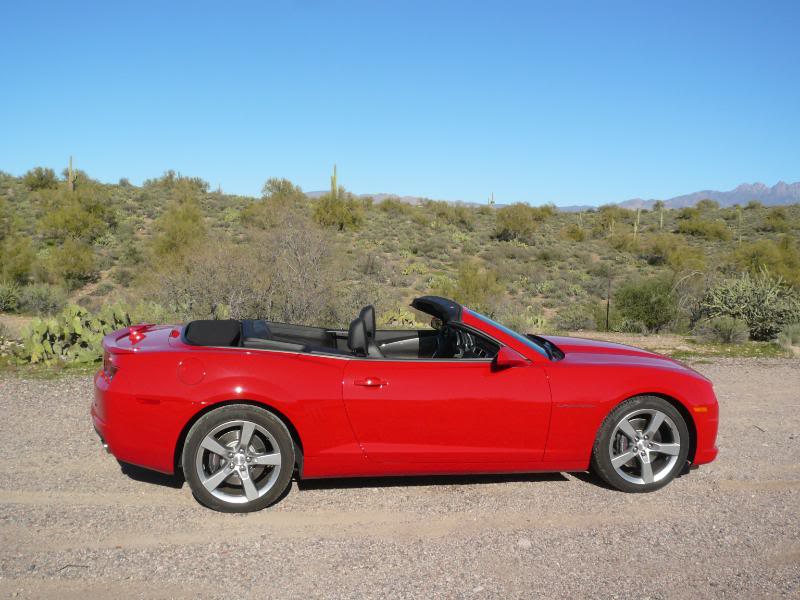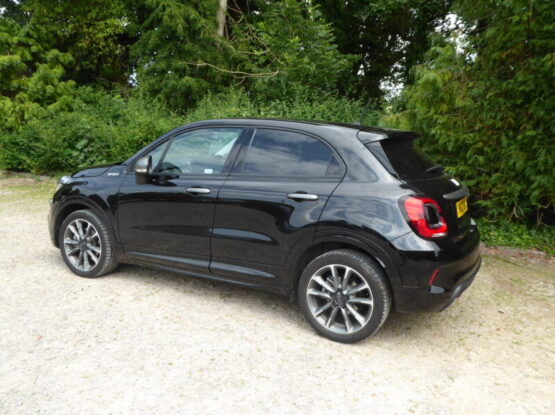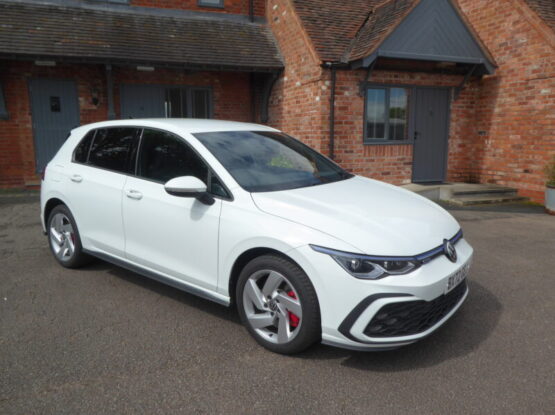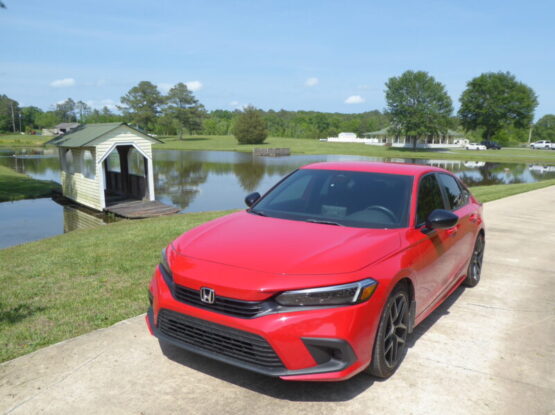

















 When Ford launched the current Mustang in 2004, producing an eye catching design that successfully combined a visual homage to the very first Pony car with modern styling cues and simple but effective mechanicals that made even the cheapest V6 model good to drive at a price that plenty could afford, they had the market for affordable sports coupes and convertible all to themselves. Back in the 1960s, Ford had quickly gained competition, most especially from GM who launched their Camaro and Firebird models in 1967. Even more than the Mustang, these once revered nameplates had lost their way during the 1980s and 1990s, becoming increasingly irrelevant to the desires of modern buyers and the GM cars were killed off before the turn of the century. Spotting the success of the new Mustang, though, the designers at Chevrolet decided to go down the same course and produce a new Camaro, that also took design cues from the much loved 1967 car, but with new engineering to make it relevant to twentyfirst century motoring. After literally years of showing concept versions, the new Camaro finally went on sale in 2009, and it quickly became clear that this was a real competitor to the Ford. Just as in the 1960s, there is an element of almost religious zeal among the fans, with neither Ford nor Chevy fans willing to concede that the other product is as good, or even, heaven forbid, perhaps better. One way of looking at it is to see which car sell the most, and very soon it was the Camaro that was outselling Mustang, admittedly only by a small margin each month, but enough for it to be clear that this was definitely no longer a one-horse race. Chevrolet achieved this in 2009 and 2010 despite the fact that many Mustang sales were of the popular and attractive convertible version which has huge appeal to holiday makers and other car renters especially in the sunnier states, whereas Chevrolet only had a Coupe to offer. The production Camaro Convertible finally made its debut at the LA Auto Show in November 2010, and for me, someone who despite liking the latest Mustang is probably more on the Camaro side of the house, it was a Star of the Show. I had driven an SS Coupe earlier in the year and absolutely loved it, so I was hopeful that the open topped cars would arrive in rental fleets to join the gradually increasing population of Camaro Coupes. I had to wait for most of 2011 before Hertz acquired the convertible on fleet. What did delight me is that when the cars arrived they had bought not just the V6 models but the “full fat” V8 SS cars, too. Booking one of those for my New Year vacation in Arizona was a no-brainer, and I collected it on New Years Eve, just before getting the news that in 2011 Chevrolet sold nearly 20,000 more Camaros than Ford did Mustangs. Hopes were high, therefore, that the last test car of 2011 and first of 2012 would prove to be something very special indeed.
When Ford launched the current Mustang in 2004, producing an eye catching design that successfully combined a visual homage to the very first Pony car with modern styling cues and simple but effective mechanicals that made even the cheapest V6 model good to drive at a price that plenty could afford, they had the market for affordable sports coupes and convertible all to themselves. Back in the 1960s, Ford had quickly gained competition, most especially from GM who launched their Camaro and Firebird models in 1967. Even more than the Mustang, these once revered nameplates had lost their way during the 1980s and 1990s, becoming increasingly irrelevant to the desires of modern buyers and the GM cars were killed off before the turn of the century. Spotting the success of the new Mustang, though, the designers at Chevrolet decided to go down the same course and produce a new Camaro, that also took design cues from the much loved 1967 car, but with new engineering to make it relevant to twentyfirst century motoring. After literally years of showing concept versions, the new Camaro finally went on sale in 2009, and it quickly became clear that this was a real competitor to the Ford. Just as in the 1960s, there is an element of almost religious zeal among the fans, with neither Ford nor Chevy fans willing to concede that the other product is as good, or even, heaven forbid, perhaps better. One way of looking at it is to see which car sell the most, and very soon it was the Camaro that was outselling Mustang, admittedly only by a small margin each month, but enough for it to be clear that this was definitely no longer a one-horse race. Chevrolet achieved this in 2009 and 2010 despite the fact that many Mustang sales were of the popular and attractive convertible version which has huge appeal to holiday makers and other car renters especially in the sunnier states, whereas Chevrolet only had a Coupe to offer. The production Camaro Convertible finally made its debut at the LA Auto Show in November 2010, and for me, someone who despite liking the latest Mustang is probably more on the Camaro side of the house, it was a Star of the Show. I had driven an SS Coupe earlier in the year and absolutely loved it, so I was hopeful that the open topped cars would arrive in rental fleets to join the gradually increasing population of Camaro Coupes. I had to wait for most of 2011 before Hertz acquired the convertible on fleet. What did delight me is that when the cars arrived they had bought not just the V6 models but the “full fat” V8 SS cars, too. Booking one of those for my New Year vacation in Arizona was a no-brainer, and I collected it on New Years Eve, just before getting the news that in 2011 Chevrolet sold nearly 20,000 more Camaros than Ford did Mustangs. Hopes were high, therefore, that the last test car of 2011 and first of 2012 would prove to be something very special indeed.























 Apart from the fresh air, there is another advantage in driving with the roof down. You can hear the wondrous sounds from the V8 engine. They are at their best when you start the car, or when you prod the throttle, as at a steady speed, this is a nicely refined cruiser. Starting it is a real treat, as there is clearly a flap in the exhaust designed to make a special noise a couple of seconds after you turn the key. I’d say that Chevrolet have found the right balance between making the car sound nice and not being too loud that it gets wearing on a long journey. Be in no doubt, though, that this engine is more than just a nice noise. It makes the Camaro go pretty well, too. Automatic gearbox cars lose 26 bhp over the manual machines, but they still put out 400 bhp, which is a lot, and it makes this car not just brisk, but genuinely rapid. And if that is not rapid enough, then the forthcoming V8 supercharged ZL1 car with 580 bhp should stop anyone moaning. You can potter along quite sedately, with no problem, but just squeeze the throttle a little and the Camaro comes to life, accelerating hard for as long as you will let it. Sadly, although Arizona has got rid of its profusion of speed cameras that infested the place a couple of years ago, there were too many law enforcement officers around and a bright red convertible is always going to attract attention, so I had to limit my flexing of the right foot. Even so, I found immense pleasure in driving this car, in exploiting the acceleration albeit in short bursts, and revelling in the sound it makes. The note that you get on start up was almost enough to encourage a lot more stop/start of the engine than normal, but when you look at the number of photos I took of this car – far more than normal, even allowing for the fact that I had it for 5 days – it seemed that there was a set of valid reasons to be listening to the crackle of start up time and time again. That said, when cruising at a steady speed, the car is quiet, almost too quiet from an engine point of view, so this is a refined car as well as a hooligan mobile. Perfect! Automatic Camaros have a 6 speed transmission. the leather wrapped gearlever comes perfectly to hand. “Flappy paddles” are mounted behind the steering wheel for manual changes, but you would be hard pressed to be smoother than those executed by the gearbox electronics, as they are all but undetectable. For the kind of testing I undertook, the Camaro always seemed to be in the right gear and the ample quantities of torque ensured that even if it was not, it was never likely to be embarrassed or slow to respond.
Apart from the fresh air, there is another advantage in driving with the roof down. You can hear the wondrous sounds from the V8 engine. They are at their best when you start the car, or when you prod the throttle, as at a steady speed, this is a nicely refined cruiser. Starting it is a real treat, as there is clearly a flap in the exhaust designed to make a special noise a couple of seconds after you turn the key. I’d say that Chevrolet have found the right balance between making the car sound nice and not being too loud that it gets wearing on a long journey. Be in no doubt, though, that this engine is more than just a nice noise. It makes the Camaro go pretty well, too. Automatic gearbox cars lose 26 bhp over the manual machines, but they still put out 400 bhp, which is a lot, and it makes this car not just brisk, but genuinely rapid. And if that is not rapid enough, then the forthcoming V8 supercharged ZL1 car with 580 bhp should stop anyone moaning. You can potter along quite sedately, with no problem, but just squeeze the throttle a little and the Camaro comes to life, accelerating hard for as long as you will let it. Sadly, although Arizona has got rid of its profusion of speed cameras that infested the place a couple of years ago, there were too many law enforcement officers around and a bright red convertible is always going to attract attention, so I had to limit my flexing of the right foot. Even so, I found immense pleasure in driving this car, in exploiting the acceleration albeit in short bursts, and revelling in the sound it makes. The note that you get on start up was almost enough to encourage a lot more stop/start of the engine than normal, but when you look at the number of photos I took of this car – far more than normal, even allowing for the fact that I had it for 5 days – it seemed that there was a set of valid reasons to be listening to the crackle of start up time and time again. That said, when cruising at a steady speed, the car is quiet, almost too quiet from an engine point of view, so this is a refined car as well as a hooligan mobile. Perfect! Automatic Camaros have a 6 speed transmission. the leather wrapped gearlever comes perfectly to hand. “Flappy paddles” are mounted behind the steering wheel for manual changes, but you would be hard pressed to be smoother than those executed by the gearbox electronics, as they are all but undetectable. For the kind of testing I undertook, the Camaro always seemed to be in the right gear and the ample quantities of torque ensured that even if it was not, it was never likely to be embarrassed or slow to respond.



























































































































